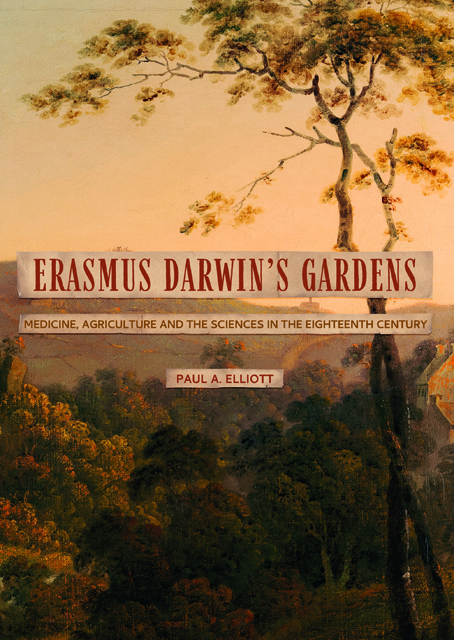Book contents
- Frontmatter
- Contents
- List of Figures
- Acknowledgements
- A Note on Plant Names and Identification
- Introduction
- 1 Lichfield and Derby Gardens
- 2 Medicinal Plants and Their Places
- 3 Agricultural Improvement: Enclosure and the Application of Science and Technology
- 4 Vegetable Physiology, Technology and Agriculture
- 5 Vegetable Pathology and Medicine
- 6 Among the Animals
- 7 Animal Diseases
- 8 ‘Eating of the Tree of Knowledge’: Forestry, Arboriculture and Medicine
- 9 Trees in the Economy Of Nature
- Conclusion
- Select Bibliography
- Index
- Garden and Landscape History
1 - Lichfield and Derby Gardens
Published online by Cambridge University Press: 14 January 2023
- Frontmatter
- Contents
- List of Figures
- Acknowledgements
- A Note on Plant Names and Identification
- Introduction
- 1 Lichfield and Derby Gardens
- 2 Medicinal Plants and Their Places
- 3 Agricultural Improvement: Enclosure and the Application of Science and Technology
- 4 Vegetable Physiology, Technology and Agriculture
- 5 Vegetable Pathology and Medicine
- 6 Among the Animals
- 7 Animal Diseases
- 8 ‘Eating of the Tree of Knowledge’: Forestry, Arboriculture and Medicine
- 9 Trees in the Economy Of Nature
- Conclusion
- Select Bibliography
- Index
- Garden and Landscape History
Summary
Erasmus Darwin loved seeing, touching, smelling, using, studying and celebrating plants and wanted others to share in his enjoyment, from members of his family to his patients, who utilised their virtues or powers as drugs to combat their illnesses and improve their lives. In Phytologia, his treatise upon agriculture and gardening, he exclaimed that ‘the beautiful colours of the petals of flowers with their polished surfaces’ were ‘scarcely rivalled’ by those of shells, feathers or ‘precious stones’. Many of these ‘transient beauties’ that gave such ‘brilliancy to our gardens’ delighted ‘the sense of smell with their odours’ and were employed extensively ‘as articles either of diet, medicine, or the arts’. Knowledge of plants was always important for Darwin, given that vegetable products were the basis of so much of the materia medica (substances prescribed as treatments), and botany was taught in the medical schools in order that practitioners could distinguish useful from useless or even dangerous plants.
During the 1770s and 1780s, however, botany and gardening assumed greater significance in Darwin’s life, encouraged by a community of plant enthusiasts and what Sylvia Bowerbank has described as literary ‘defenders’ of ‘environmental stewardship’ who were centred upon Lichfield and invested it with ‘deep feeling and value’ as a multilayered ‘storied place’. Among them were the poet Anna Seward, Rev. John Saville (1736–1803), Darwin’s future wife Elizabeth Pole and the members of the botanical society that Darwin formed, as noted above, with Brooke Boothby and William Jackson (1743/5–1798), who were engaged upon a project to translate some of the works of Carl Linnaeus (1707–1778) from Latin into English. Encouraged by his medical and scientific botanical concerns, his growing love of gardening and his experience of the countryside around Lichfield and the local coterie of plant lovers, Darwin developed a botanic garden in a small well-watered valley near the city, which inspired the two parts of his epic poem The Botanic Garden (1791). The formation of the Lichfield botanical garden was a crucial moment in both Darwin and Seward’s poetical careers. Through the success of the Botanic Garden, which, as the poet Samuel Taylor Coleridge (1772–1834) remarked, was ‘for some years greatly extolled, not only by the reading public in general’ but by poets of his generation, Darwin’s Lichfield creation became one of the most influential British botanical gardens.
- Type
- Chapter
- Information
- Erasmus Darwin's GardensMedicine, Agriculture and the Sciences in the Eighteenth Century, pp. 19 - 52Publisher: Boydell & BrewerPrint publication year: 2021

